GREEN SCHOOLYARDS FOR URBAN RESILIENCE
Urban resilience is the capacity of cities to survive and function well under stress. Climate change is a major source of stress for cities around the world. Cities with urban climate change resilience (UCCR) are adaptable to climate change on multiple levels. Their systems can survive the stresses of climate change; the people and organizations within the city can accommodate these stresses; and the city’s institutional structures continue to support people and organizations in the fulfillment of their aims. Green schoolyards are one form of neighborhood greenspace that can contribute to urban resilience. Green schoolyards, when available to the public, can function as a public park or greenspace. Some examples of research on such public greenspaces with implications for the greater good are summarized below, after those specific to schoolyards.
Using a resilience frame to explore greening schoolyard initiatives can support the strengthening of systems at different scales
Researchers applied a nine-box resilience frame to study the multi-beneficial impacts of greening schoolyards in three large cities (Chicago, Amsterdam and Paris). Benefits identified through this approach included (a) enhanced community engagement and social cohesion, (b) mitigation and adaptation to climate change, and (c) improved human health and well-being.
Flax et al. 2020. Greening schoolyards: An urban resilience perspective.
Access Study
School parks can serve as a tool for urban heat island adaptation and health promotion
Environmental assessments conducted in three school parks in low-income communities in Texas found extreme heat conditions and significant differences in heat index across park sites, with tree canopy accounting for the differences. Observations of children in the parks showed that they positioned themselves under trees during periods of high heat index for thermal comfort.
Lanza et al., 2021. Effects of trees, gardens, and nature trails on heat index and child health: Design and methods of the Green Schoolyards Project.
Access Study
Greater tree canopy can preserve moderate to vigorous physical activity levels in children compared to areas with less tree canopy
Data collected from accelerometers and global positioning system monitors worn by 213 students from three schools in Texas showed that the children’s outdoor activity levels decreased as temperatures increased. The data also showed that children at the schoolyard with the most tree canopy spent more time in moderate to vigorous physical activity, which can promote long-term health, than children in the other schoolyards.
Lanza, K. et al. (2023). Heat-resilient schoolyards: Relations between temperature, shade, and physical activity of children during recess.
Access Study
Increasing environmental biodiversity on school grounds may lessen immune-mediated diseases in urban communities
Natural forest floor and sod were used to cover the yard of four childcare centers in Finland. Follow-up assessment showed that these yards had considerably more soil microbiota than the standard yard. Assessments also showed that children attending the centers with natural forest floor had more diverse skin and gut bacteria and signs of better immune system functioning than children in centers without the forest floor.
Roslund et al. 2020. Biodiversity intervention enhances immune regulation and health-associated commensal microbiota among daycare children.
Access Study
Increasing the biodiversity of urban green spaces can help people and the planet adapt to the urban environment in the face of climate change
This systematic review of the academic literature analyzed the relationships between the characteristics of public urban green spaces and human well-being components. Findings support the idea that structure-related variables of green space (form of trees, vegetation cover, green space connectivity and size, and the distance among green spaces) are essential for promoting human benefits of green space but also highlight the importance of biodiversity and naturalness.
Reyes-Riveros et al. 2021. Linking public urban green spaces and human well-being: A systematic review.
Access Study
Neighbourhood greenspace increases citizens’ sense of community connection
This paper draws from multiple areas of research to illustrate how exposure to nature and community cohesion are positively linked. Positive associations of neighborhood greenspace with social cohesion are consistent across different types of studies and have been observed in many regions around the world. The positive effects of nature exposure on social health include both immediate and long-term outcomes.
Arbuthnott, 2023. Nature exposure and social health: Prosocial behavior, social cohesion, and effect pathways.
Access Study
Evidence linking nature and health strongly supports the idea of looking to nature as a community health tool
This article draws from three categories of research to support the use of nature for promoting the health of individuals and communities: population-level studies; research evaluating the immediate physical and mental health impacts of nature contact; and intervention studies offering empirical evidence of a causal link between nature contact and positive health outcomes. Implications include incorporating nature contact counseling into existing health-promotion efforts and making greater investments in changing neighborhood conditions to provide more nature contact.
South, Kondo & Razani, 2020. Nature as a community health tool: The case for healthcare providers and systems.
Access Study
Nature-based solutions in urban environments could become a public health tool
Thirteen studies were included in a literature review focusing on associations between public health and natural urban environments. Findings provide strong evidence for green space being effective in improving affect in people and reducing heat in urban environments, thus reducing the risk of cardiovascular disease.
van den Bosch & Sang, 2017. Urban natural environments as nature-based solutions for improved public health — A systematic review of reviews.
Access Study


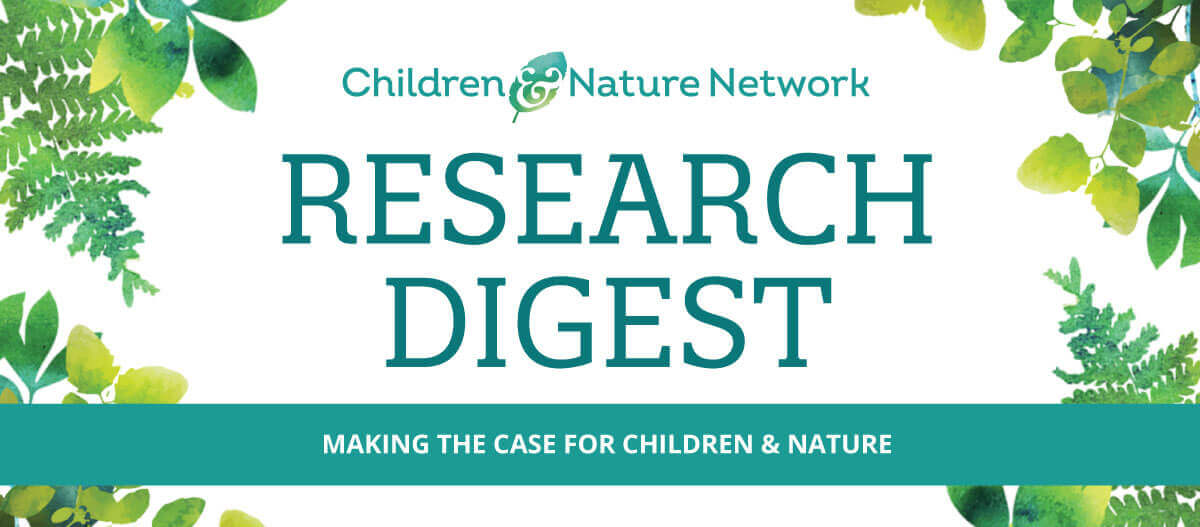

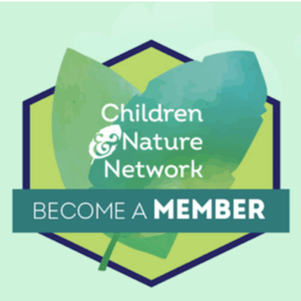 Help us make the case for children and nature
Help us make the case for children and nature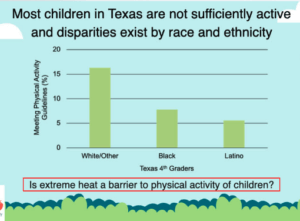 In search of a greener schoolyard: As the planet heats up, green schoolyards offer a world of benefits
In search of a greener schoolyard: As the planet heats up, green schoolyards offer a world of benefits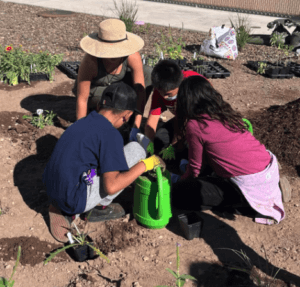 In Flagstaff, green schoolyards sprout after climate-related disasters
In Flagstaff, green schoolyards sprout after climate-related disasters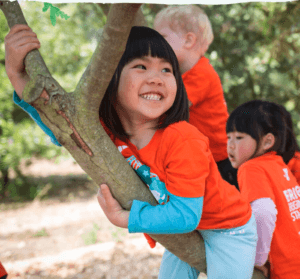 The Equigenic Effect: How Nature Access Can Level the Playing Field for Children
The Equigenic Effect: How Nature Access Can Level the Playing Field for Children
